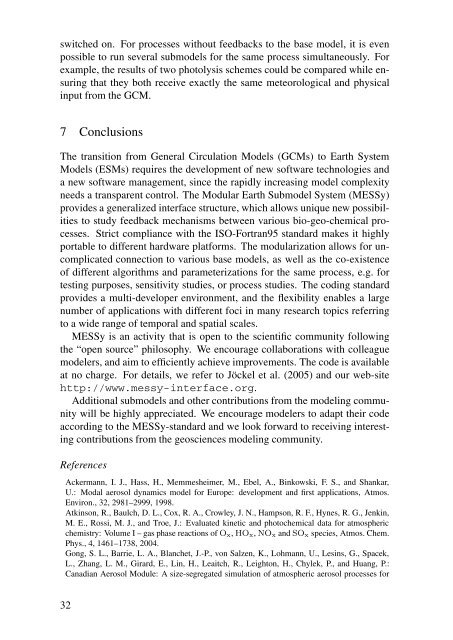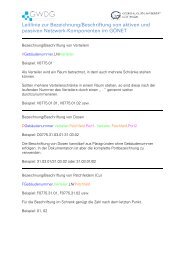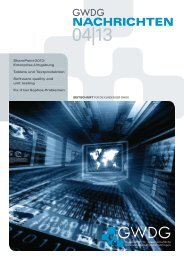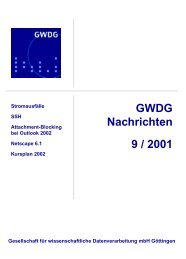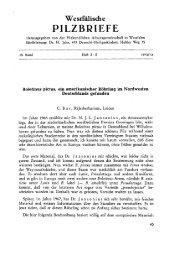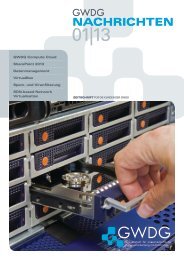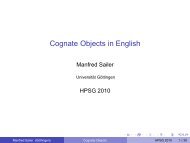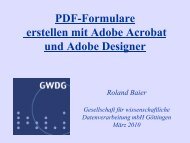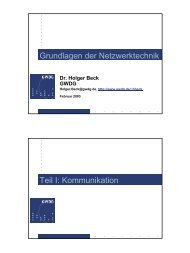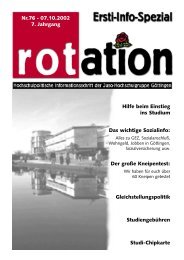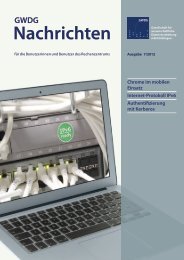Forschung und wissenschaftliches Rechnen - Beiträge zum - GWDG
Forschung und wissenschaftliches Rechnen - Beiträge zum - GWDG
Forschung und wissenschaftliches Rechnen - Beiträge zum - GWDG
Sie wollen auch ein ePaper? Erhöhen Sie die Reichweite Ihrer Titel.
YUMPU macht aus Druck-PDFs automatisch weboptimierte ePaper, die Google liebt.
switched on. For processes without feedbacks to the base model, it is even<br />
possible to run several submodels for the same process simultaneously. For<br />
example, the results of two photolysis schemes could be compared while ensuring<br />
that they both receive exactly the same meteorological and physical<br />
input from the GCM.<br />
7 Conclusions<br />
The transition from General Circulation Models (GCMs) to Earth System<br />
Models (ESMs) requires the development of new software technologies and<br />
a new software management, since the rapidly increasing model complexity<br />
needs a transparent control. The Modular Earth Submodel System (MESSy)<br />
provides a generalized interface structure, which allows unique new possibilities<br />
to study feedback mechanisms between various bio-geo-chemical processes.<br />
Strict compliance with the ISO-Fortran95 standard makes it highly<br />
portable to different hardware platforms. The modularization allows for uncomplicated<br />
connection to various base models, as well as the co-existence<br />
of different algorithms and parameterizations for the same process, e.g. for<br />
testing purposes, sensitivity studies, or process studies. The coding standard<br />
provides a multi-developer environment, and the flexibility enables a large<br />
number of applications with different foci in many research topics referring<br />
to a wide range of temporal and spatial scales.<br />
MESSy is an activity that is open to the scientific community following<br />
the “open source” philosophy. We encourage collaborations with colleague<br />
modelers, and aim to efficiently achieve improvements. The code is available<br />
at no charge. For details, we refer to Jöckel et al. (2005) and our web-site<br />
http://www.messy-interface.org.<br />
Additional submodels and other contributions from the modeling community<br />
will be highly appreciated. We encourage modelers to adapt their code<br />
according to the MESSy-standard and we look forward to receiving interesting<br />
contributions from the geosciences modeling community.<br />
References<br />
Ackermann, I. J., Hass, H., Memmesheimer, M., Ebel, A., Binkowski, F. S., and Shankar,<br />
U.: Modal aerosol dynamics model for Europe: development and first applications, Atmos.<br />
Environ., 32, 2981–2999, 1998.<br />
Atkinson, R., Baulch, D. L., Cox, R. A., Crowley, J. N., Hampson, R. F., Hynes, R. G., Jenkin,<br />
M. E., Rossi, M. J., and Troe, J.: Evaluated kinetic and photochemical data for atmospheric<br />
chemistry: Volume I – gas phase reactions of Ox, HOx, NOx and SOx species, Atmos. Chem.<br />
Phys., 4, 1461–1738, 2004.<br />
Gong, S. L., Barrie, L. A., Blanchet, J.-P., von Salzen, K., Lohmann, U., Lesins, G., Spacek,<br />
L., Zhang, L. M., Girard, E., Lin, H., Leaitch, R., Leighton, H., Chylek, P., and Huang, P.:<br />
Canadian Aerosol Module: A size-segregated simulation of atmospheric aerosol processes for<br />
32


